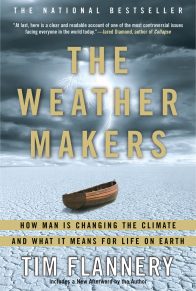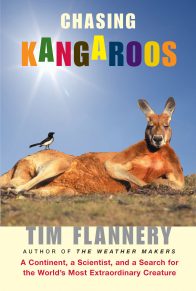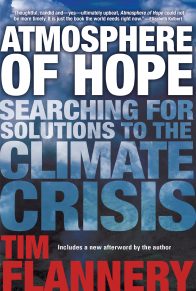For as long as I can remember I have been intrigued by New Guinea. Perhaps it was the stories my uncle `Gunner’ Keith told of fighting the Japs in Dutch New Guinea, of spiders the size of dinner plates, and of fuzzy wuzzy angels, the warriors who used their local knowledge to save the lives of many Australian soldiers during the Second World War. Maybe it was the visit to my school by a group of excruciatingly shy yet fascinating Papuan students. Whatever it was, it worked its magic while I was still a child.
I was twenty-six when I first travelled overseas. I went to Papua New Guinea. I can still feel the wonderment, tinged with excitement–even fear–which flared in my breast. The crisp, cool mountain air, the unfamiliar smells, sights and sounds all embedded themselves deep in my consciousness.
Everything was new and strange.
*
New Guinea sprawls like a vast prehistoric bird across the sea north of Australia. After Greenland it is the world’s largest island, and its size, shape and rugged mountains are all the result of its peculiar geological history, for New Guinea is Australia’s bow wave. As the continent of Australia has drifted northward it has accumulated islands and fragments of other continents along its leading edge. Like debris swept together by a broom, these have built up into a long, chaotic pile of landforms. This geology also explains why New Guinea’s flora and fauna resembles Australia’s. Although it is close to southeast Asia, New Guinea has no tigers, rhinos or elephants, but it does have kangaroos. New Guinea’s kangaroos, however, live in the trees.
Mi bai throwim way leg nau (I’m starting my journey now) still has literal meaning, for even today walking is the only means of travel in much of New Guinea. The island’s topography is so rugged that roads service only a tiny portion of it. There are no roads, for example, linking either Port Moresby (the capital of Papua New Guinea) or Jayapura (the capital of Irian Jaya) with the rest of the country. Furthermore, there are no pack animals in New Guinea and, until the arrival of aircraft, New Guineans living in adjacent valleys, or in the mountains and on the coast, were as isolated from each other as people living on different continents. This helps explain why New Guinea is home to about 1,000 languages–one sixth of the world total.
While New Guinea is still one of the world’s last frontiers, its human history is venerable. People have lived there for at least 45,000 years. They arrived by sea from Asia at a time when New Guinea and Australia were joined. As the sea rose and isolated the two landmasses, these immigrants were to diversify into the living Australian Aborigines and the tribesmen of New Guinea.
Nine thousand years ago, New Guineans living in high mountain valleys had already developed intensive agriculture. There they domesticated and harvested the world’s most important plant crop–sugar cane–along with taro (a large nutritious tuber), bananas, yams and winged beans. They had begun this process at a time when my European ancestors were still chasing woolly mammoths across the tundra.
Despite its isolation New Guinea has played an important role in world trade. By the sixteenth century, Sri Lankan princes were adorning themselves with hats made from New Guinea’s birds of paradise. Before that, it seems likely that Chinese were consuming New Guinean nutmeg, and Indonesians rubbing themselves with oil made from New Guinea’s Massoi tree. The ancient Romans flavoured their food with cloves, which are the flower buds of a lilly pilly which grows only on islands just to the west of New Guinea.
During the colonial period, Germany, the Netherlands and Australia all counted parts of New Guinea as their territory. Australia ended up administering the eastern half of the island, which became the independent nation of Papua New Guinea in 1975. The western half passed from Dutch to Indonesian hands, and is now a province of Indonesia.
This brief political history, however, says little of the lives of the village people themselves, for many were unaffected by much of it. Despite half a century of colonial rule, it was only in 1935 that Australian gold prospectors stumbled across the 750,000 people living in the central highlands of Papua New Guinea–by far the largest concentration of people on the island, some of whom live at the greatest rural population density on the planet.
Irian Jaya’s major population centre, the Baliem Valley, was discovered even later, in 1938, when the millionaire adventurer Richard Archbold saw what he described as a `shangri la’ from the air. This was the last time in the history of our planet that such a vast, previously unknown civilisation was to come into contact with the west, and it was not until over a decade later that substantial contact was made with this area.
*
Biologists have played a leading role in the exploration of New Guinea. Luigi Maria D’Albertis, a Genoese, was one of the first. On 6 September 1872, he had the privilege of being the first European to enter the island’s mountains. There he discovered a biological realm unknown to the outside world. He later explored the Fly River with the aeronautical pioneer Lawrence Hargrave, impressing the locals with dramatic displays of fireworks. Richard Archbold was leading just one of three major biological survey expeditions which he participated in when he discovered the Baliem Valley. The fund he established was eventually to sponsor seven major biological exploring expeditions to the island.
Even contemporary biologists have made significant contributions. In 1974 Jared Diamond explored the Foja Mountains of Irian Jaya. No European had previously set foot in this vast range, and no native people inhabit it. The animals were entirely tame, birds of paradise displaying to Diamond within metres of his face, while undescribed kinds of tree-kangaroos stared at him as he walked by.
I was already studying for my doctorate when I undertook my first expedition to New Guinea. I went there because New Guinea seemed to be the last great biological unknown, and I felt that it was on the island’s biological frontier that I could make my best contribution to mammalogy, my area of expertise.
As I studied in preparation for that first expedition, I read avidly about the island. I found that one had to ferret around in innumerable musty scientific papers to discover what had already been achieved in New Guinea mammalogy. There was no compendium, no single volume where I could go to learn what other researchers had already found. There were few photographs of the mammals, and everything then known about their ecology could have fitted comfortably onto this page. Here, I felt, was my chance to make a lasting contribution. I could write the first handbook of the mammals of this great island.
Fifteen expeditions, two trips to museums overseas, and countless hours in libraries later, I achieved my goal.
In my naivety, I imagined when I set out on this quest that the world was fully documented, and that the great age of exploration had ended in the nineteenth century. I was envious of explorers like D’Albertis, who walked through entire undiscovered mountain ranges, and who lived for months on end on a diet of rice and newly discovered birds of paradise. My role, I thought, was more humble: to bring together the knowledge previous researchers had gathered, add some photographs and ecological notes, and place it all between the covers of one book. If I was lucky, I might discover some obscure creature such as a rat which had escaped the searching eyes of earlier explorers. My greatest discovery in New Guinea, perhaps, was finding out just how wrong I was.
Little did I imagine then that I was to live among largely uncontacted peoples, to whom, just a few years before, cannibalism had been not a rumour but a way of life. Nor did I think I would climb mountains previously unscaled by Europeans, enter uncharted caves, or rediscover animals previously known only as ice-age fossils. Had someone intimated to me that I was to discover what is arguably the world’s largest rat, name four kinds of tree-kangaroos, or stumble on a cave full of the bones of long extinct and entirely unknown marsupial giants, I would have scoffed in disbelief. Yet I did.
I have always worried that my book Mammals of New Guinea would lead students into imagining that the age of exploration is finished in New Guinea. The book looks so glossy, so neat and so complete, but it is, in reality, just a beginning. New Guinea is as vast a field for adventure and discovery as it ever was, and even though the cultures of its people are changing rapidly they will offer a very different way of seeing the world for many years to come. I hope that the great island will continue to exert its magnetic attraction on young adventurers and researchers, and that they will continue where I have left off.
Chapter One
Buai impressionism
The aircraft circled slowly over a parched landscape. Below, the atmosphere was thick with smoke as the rank, brown savannah burned. In the wet-dry tropics, fire rends the landscape the way an archaeologist strips layers of sediment with a trowel. Here it had revealed a dozen old horseshoe-shaped redoubts (once used to shelter aircraft from bomb attacks) encircling the airstrip, vast piles of discarded fuel drums, and the skeletons of armoured vehicles and other such remanie of the Second World War.
This was Jackson Airport, gateway to Papua New Guinea, a nation which in December 1981 was less than six years old. It was definitely not the luxuriant, jungle-clad New Guinea landscape I had imagined countless times in my dreams.
*
My first memories of Port Moresby are still vivid. Dark-skinned women and children sitting on each street corner before piles of buai (betel nut) and daka (fruit of the pepper vine chewed with buai), or perhaps neat bundles of peanuts as I had never seen them before, tied together by their stalks.
At first I took the red stains lying on every footpath and wall to be blood. The result, perhaps, of violent assault and bloody riot. It was only later, after much private anguish, that I learned that the stains were buai. When the kernel of the small green nut is chewed with lime (made from crushing burned sea-shells) and daka, the mixture turns bright red. Chewing buai ends when a great red stream of liquid is ejected from the mouth, often with extraordinary force, accuracy and aplomb.
The first flush of innocent inquiry allows a person a kind of liberty which fuller knowledge denies them. Satisfied that the streets of Port Moresby were not steeped in blood, I felt free to roam where I would–even once as far as the front bar of the notorious Boroko Hotel.
That evening, after I’d drunk a beer or two in a hushed silence and surrounded by dark stares, a couple of young Hanuabada lads suggested that they would walk me back to Angau Lodge where I was staying. It was only as we neared home that, noticing the barbed-wire compounds and vicious dogs surrounding every house in Boroko, I realised they had certainly saved my money, and possibly my life.
I soon found that the best and cheapest places to eat in Moresby were the Chinese cafes. The Diamond Cafe in Boroko became my favourite. Its laminex table-tops and simple menu reminded me of the Chinese restaurants of my childhood, of my father bringing our own saucepans to be filled with fried rice and sweet-and-sour pork. One night, I noticed that a curious addition had been chalked on the menu board. Below the chow mein was written Papa Fell Over. Intrigued, and suspecting it to be some exceedingly alcoholic local brew, I ordered a small one with coffee.
Startlingly renamed in Melanesian Pidgin, and transmogrified in a Chinese kitchen, that distinctively Australian dessert pavlova never tasted so good.
*
Koki Market nestles by the sea near Ela Beach. This beautiful, exotic place drew me daily. A sea of constantly moving black bodies crowded the square, the musky animal smell of humanity blend with the distinctive spice of buai. Huge red splashes of the latter seemed to be concentrated around a sign proclaiming NO KEN KAIKAI BUAI HIA (BETEL NUT CHEWING PROHIBITED). Nearby, an old fellow sat each morning, dressed in a simple laplap, with just a few buai for sale in front of him, his grizzled head nodding. One afternoon there were only two fruit left as he made a painful effort to unbend his arthritic joints. A woman screamed out in Motuan, `Hey old man, you’ve left your balls behind!’ and the entire marketplace rang with peals of hysterical laughter.
Gargantuan piles of fruit and vegetables always covered every market bench. Above this cornucopia hung mysteriously shaped bags and bundles, suspended by wooden hooks from the rafters of the tin-roofed shelters. I could see, occasionally, a bewildered-looking cuscus (a kind of possum) peek from one of the string bags, but the contents of others remained obscure. I desperately wished to acquire some cuscusses for our museum collection. Before I realised that the bundles could contain anything from groceries to babies, I sometimes found myself bargaining, in this language I barely understood, for pikininis rather than possums.
Near the water one day, a mammoth hawksbill turtle lay on its back in the sun, gulping helplessly, its eyes streaming salty tears. This was the seafood section. Someone had already purchased a fore-flipper. Shocked by the cruelty, I abandoned thoughts of turtle soup and instead purchased two live kindam, beautiful painted crayfish, for less than a dollar each. Never did I imagine that my meagre field allowance would extend to such luxuries.
Just behind were the meat stalls. There, piled in their dozens, were the smoked bodies of wallabies. The smell of the smoky wood fire was dense, yet was insufficient to deter the clouds of flies which hovered about. I paid my five kina to an old man, blind in one eye and with his shotgun resting behind him, and at one stroke collected my first specimen in New Guinea and solved the riddle of what to curry for tomorrow’s dinner.
Leaving the market that day, I joined an enormous crowd gathered around the entrance of a dingy Chinese trade store. Young and old alike were pressed together, their mouths forming solemn Os as they craned their necks upward. Their faces were filled with amazement. After fighting my way through the crowd I discovered what transfixed them–television had just come to Port Moresby.
The twentieth century appeared to be catching up with New Guinea. But Port Moresby was a long way from Mt Albert Edward. This high, isolated mountain was the place where I hoped to encounter the timeless New Guinea of my dreams. I had not seen the mountain when I first arrived, for smoke from the innumerable dry-season fires had obscured it. It remained hidden until dawn on the very morning I was to fly to its base.
Copyright ” 1998 by Tim Flannery. Reprinted with permission from Grove Atlantic, Inc. All rights reserved.













